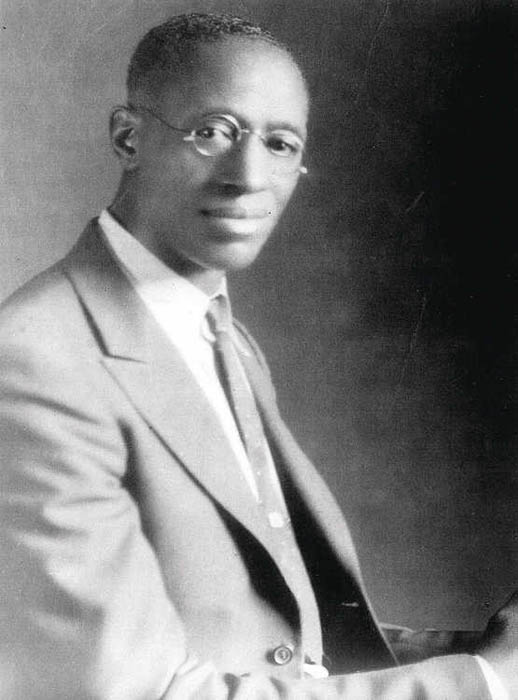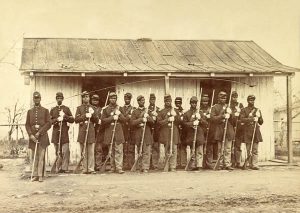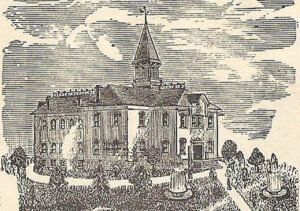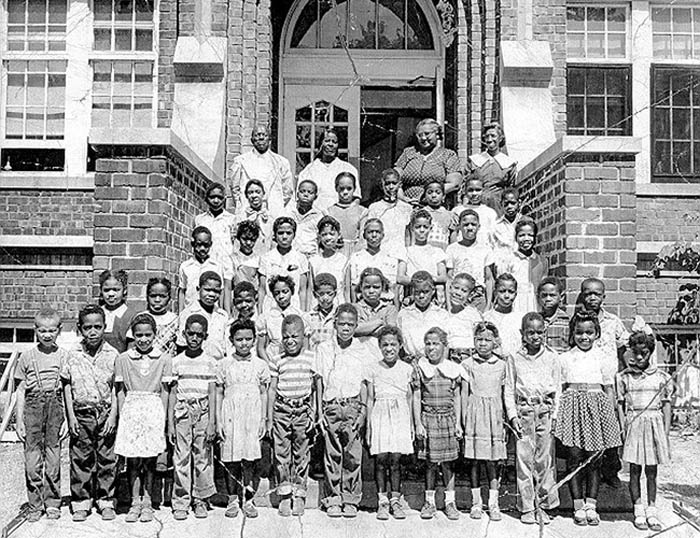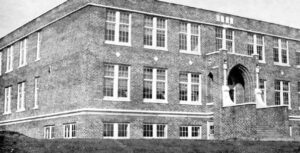“He (Hawkins) is a fearless young man who cares more for the rights of his people than his job. He allows no one to intimidate or steer him from his path of duty when it comes to defending the cause of the right, let it (be) white, black, or any other nationality.”
— Topeka Plaindealer, 1928
Professor Ernest Hawkins was an educator and civic leader in Fort Scott, Kansas, who was inducted into the 2001 Kansas Teachers Hall of Fame, the first person to be inducted posthumously.
The son of former slaves, Ernest Jocquito (E.J.) Hawkins was born in Fort Scott on May 26, 1875. His father, Erastus Hawkins, was a stone mason and a Civil War veteran who served in the 2nd Kansas Colored Volunteer Infantry Regiment.
Ernest grew up to attend school in Fort Scott. At that time, black students in the city attended The Plaza School until ninth grade but had no outlet for secondary education. To be admitted to the formerly segregated Fort Scott High School, African American students were required to pass a written test. Hawkins, along with several other black students, passed the exam and graduated from Fort Scott High School in 1891 at the age of 16, when he began his teaching career at the first Plaza School.
When Hawkins was not permitted to attend local public in-service training for teachers, he organized and began teaching seminars for black educators throughout the Midwest. After five years of teaching at the Plaza School, Hawkins was promoted to principal.
Hawkins continued his education at Kansas Normal School in Fort Scott and received his bachelor of science degree from Pittsburg State University in 1922. He also attended graduate school at the University of Southern California.
Hawkins overcame overwhelming odds to make his mark on Fort Scott’s history.
He was a teacher and principal at the 1st and 2nd Plaza Schools for 46 years, from 1900-1946. He also coached the African-American High School basketball team, the Whirlwinds, to five state championships from 1928-34. Hawkin’s motto of “Look Sharp, Be Sharp, Be Somebody” gave untold positive encouragement to the students, demonstrating that dreams could become realities.
Hawkins taught until he died in 1946. Shortly after his passing, the second Plaza School was renamed the Hawkins School in tribute to the lifelong educator and coach.
Hawkins was a past president of the local NAACP, an Exalted Mason, a Kappa Alpha Phi fraternity member, a U.S. Army veteran, and a coveted speaker throughout the Midwest. He was selected as a member of the Chamber of Commerce, a rare appointment for an African-American man at that time.
As a result of the Civil War (1861-1865), African-Americans were to be allowed to learn and receive an education that had previously been denied to them. From 1865 to 1956, four African-American schools were located on or adjacent to the land that now comprises Fort Scott National Historic Site. Several other prominent African Americans, including George Washington Carver and Gordon Parks, attended these schools.
©Kathy Alexander/Legends of Kansas, December 2023.
Also See:
One-Room, Country, & Historic Schools of Bourbon County, Kansas
One-Room, Country, & Historic Schools of Kansas
Sources:

